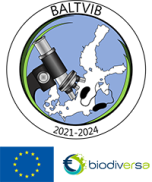BaltVib mesocosm experiment 2021, conducted at Åbo Akademi University’s marine field station Archipelago Centre Korpoström - a centre for science and art
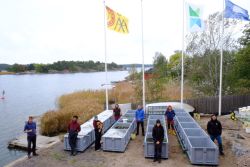
Outdoor mesocosm experiments were installed at the Archipelago Centre Korpoström to test the effects of future Baltic Sea scenarios on pelagic and benthic Vibrio occurrence under the presence and absence of simplified benthic community assemblages such as eelgrass (Zostera marina), macrophytes (Fucus vesiculosus), bay mussels (Mytilus trossulus), and Baltic clams (Macoma (Limecola) balthica). The experiments will contribute to a better understanding of the ecosystem functioning and the particular role of seagrass, clams and mussels in mitigating Vibrio occurrence. The results will support further restoration and conservation strategies and may highlight new approaches to increase restoration success and recovery of associated biodiversity
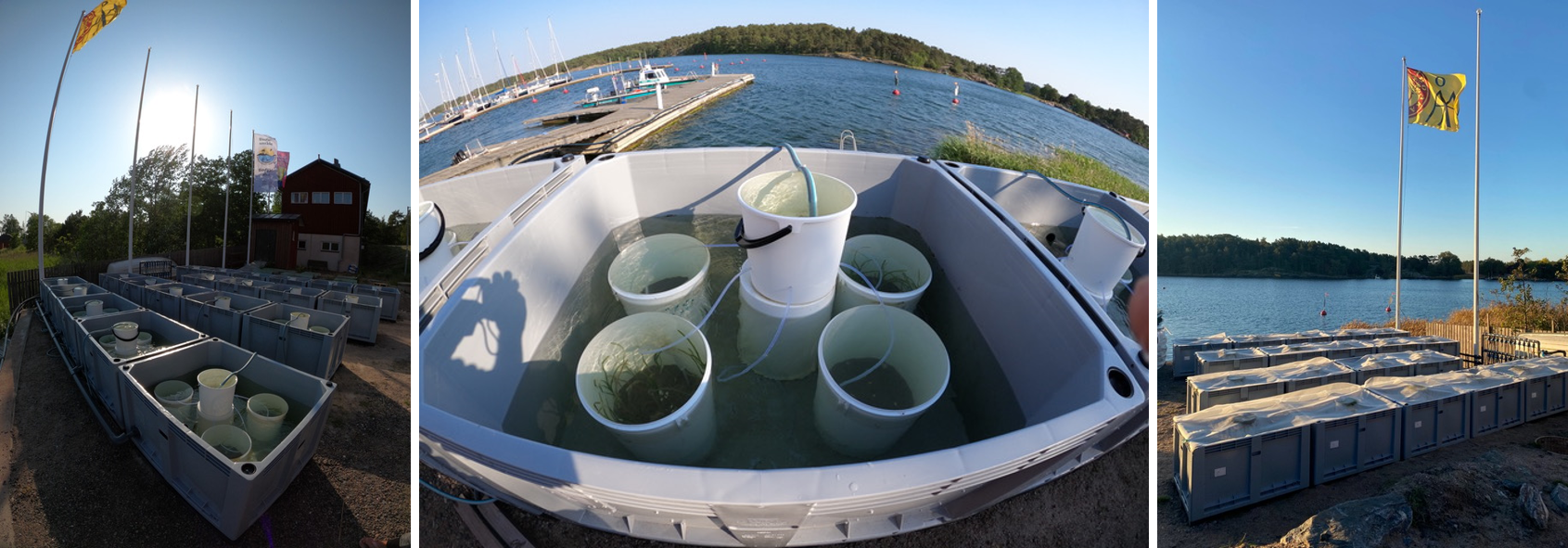
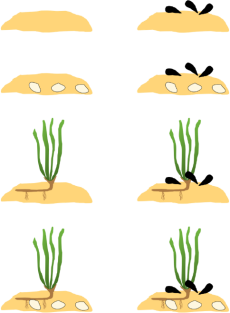
The experiment
From June to October 2021, a community experiment was conducted, including the sand-inhabiting eelgrass (Zostera marina), and the Baltic clam (Limecola (Macoma) balthica), as well as the associated bay mussel (Mytilus trossulus). The three species were either kept single or assembled in all possible combinations, and compared to bare sand patches, addressing the questions (i) how nutrients are (re)cycled between these species, (ii) how one species impacts the other species’ survival and performance, and how (iii) the different combinations of species reduce Vibrio loads in seawater.
The infrastructure constitutes of 20 600 L tanks, called mesocosms, in which ecological experiments are carried out for a better understanding of the ecosystem functioning in Baltic Sea communities. In this particular experiment, 80 18 L buckets were used as experimental sub-units, in order to simulate a variety of species assemblages. All experimental units received a constant flow-through of unfiltered seawater from the bay, enabling most-natural environmental conditions, such as natural salinity and temperature fluctuations, and natural compositions of phyto- and zooplankton as well as natural bacterioplankton.
Over the course of the experiment, regular nutrient sampling as well as measurements on temperature, salinity, pH and oxygen were conducted. Seagrass growth was measured frequently throughout the experiment. Vibrio in the water column of the 80 experimental units was sampled in August 2021, and analyzed with at R/V Elisabeth Mann Borgese, entering Finnish waters to also sample Ängsö bay for natural Vibrio loads.

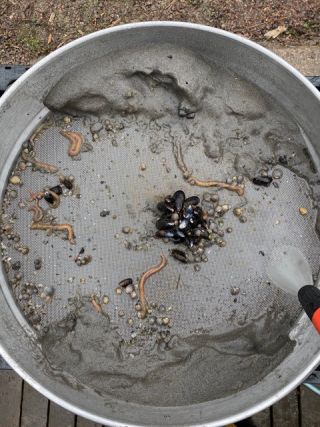
Sieved sediment community from one of experimental the sub-units. The here shown experimental treatment initially only constituted bare sand and added Mytilus. Polychates (Nereis) and clams (Cerastoderma) settled during the course of the experiment, entering the system by the through flowing seawater. Photo: ©Pansch.
